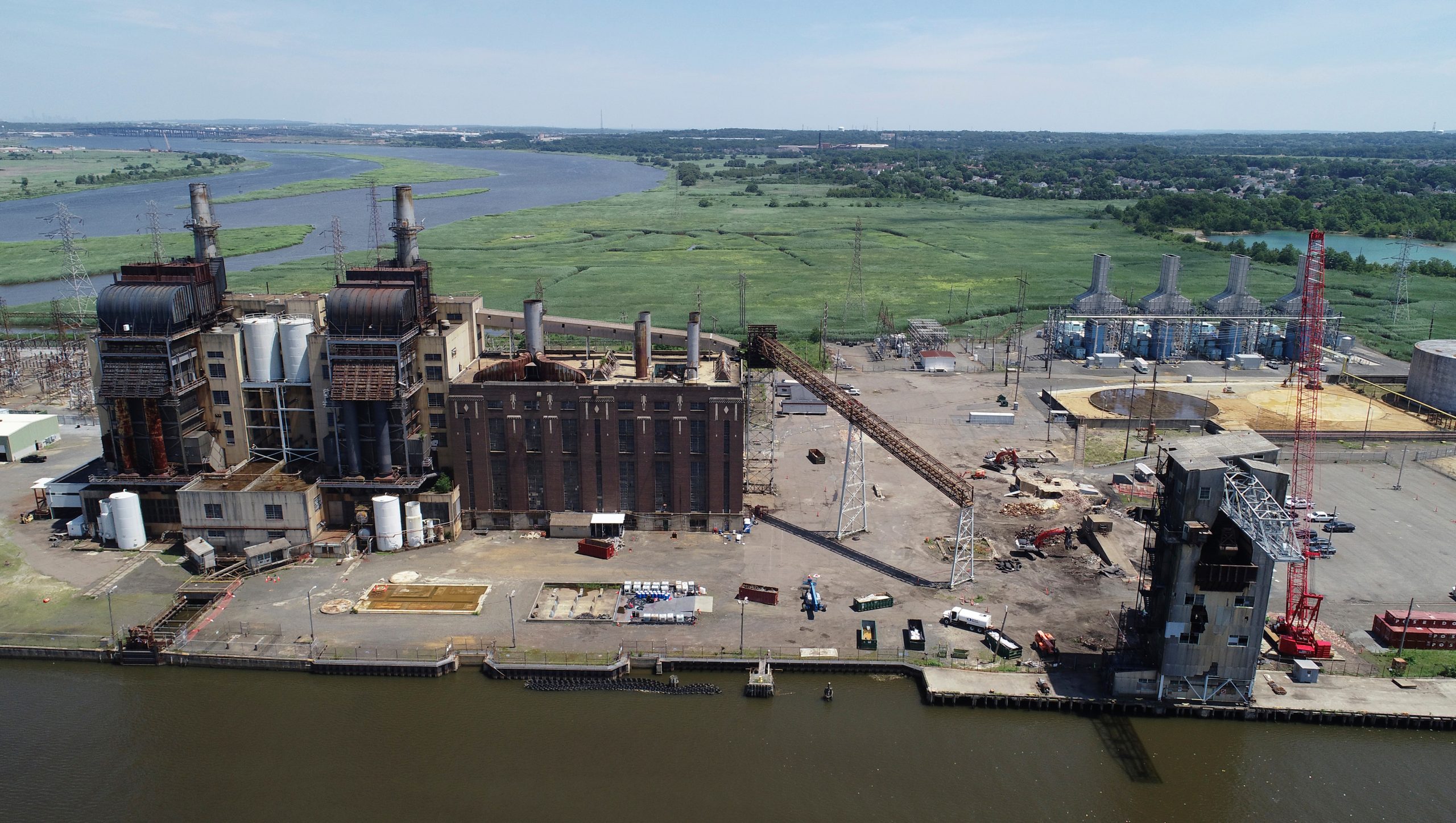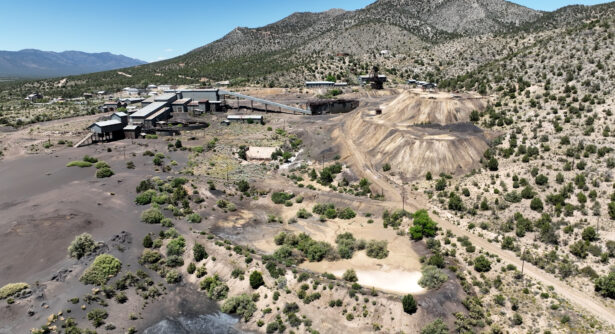
Land Recycling 101 Part 1: Definitions, Objectives, and Benefits
Everything you need to know about land recycling.
What is land recycling? How does it help? What resources are available? Get these answers and more by exploring our Land Recycling 101 feature. We’ll introduce you to the concepts, policies, and strategies to help you turn barren infill sites into functional, sustainable, and beautiful streetscapes that can reenergize any community. It’s about transformation. It’s about rebirth. It’s about time.
1. DEFINITIONS
Land recycling. Brownfields. If you are new to the site, you might be wondering what exactly do these terms mean?
Land Recycling- Land Recycling is, you might have guessed, the act of recycling land. Or more precisely: The reuse of abandoned, vacant, or underused properties for redevelopment.
Brownfield – As defined by the U.S. Environmental Protection Agency (EPA), a brownfield site is “real property, the expansion, redevelopment, or reuse of which may be complicated by the presence or potential presence of a hazardous substance, pollutant, or contaminant.” In other words, brownfield sites are abandoned, idled, or underused industrial and commercial facilities where expansion or redevelopment is complicated by real or perceived environmental contamination.
Infill Development – Development that takes place within existing communities, making maximum use of the existing infrastructure instead of building on previously undeveloped land.
Sustainable Development – Development that meets the needs of the present without compromising the ability of future generations to meet their own needs.
Brownfield Redevelopment – Development of real property for which its reuse may be complicated by the presence or potential presence of a hazardous substance, pollutant or contaminant.
Sustainability – Sustainability is defined as meeting the needs of the present without compromising the ability of future generations to meet their own needs.
Greenfields – A greenfield is a site, usually suburban or rural, that has never been used for development.
Urban Sprawl – Urban sprawl, or sprawl development, is the unplanned, uncontrolled spread of development beyond the compact urban center.
2. OBJECTIVES
Helping Communities
Because many abandoned and underutilized properties lie within economically distressed and disadvantaged communities, land recycling often benefits historically underserved areas by increasing economic investment in the neighborhood, creating local jobs, and improving community aesthetic and pride. End-uses from land recycling may include residential, commercial, industrial or mixed-use developments, as well as parks, gardens, and other open space. These developments often provide community serving retail, day care, senior centers, entertainment and other amenities.
3. BENEFITS OF LAND RECYCLING
It is estimated that there are over 450,000 brownfields and almost 15 million acres of potentially contaminated properties across the United States.
These sites sit idle and neglected, serving as desolate eyesores within their communities. By putting these barren infill sites to use, land recycling revitalizes our communities, promotes sustainable development, and preserves precious resources. The social, economic, environmental, and other benefits of land recycling include:
Social & Economic Revitalization
Land recycling helps clean up and revitalize inner cities by returning abandoned, idle, or underused sites to productive use, bolstering community spirit, creating jobs and boosting local tax revenues. The reuse of land revitalizes communities and renews economic activity, particularly in underserved urban areas. Abandoned, idled, and vacant properties are often located in former industrial and commercial areas, typically in urban and historically disadvantaged areas. These sites can be community eyesores, negatively impacting social and economic development, and often human and environmental health. The failure to redevelop brownfields in particular translates into potentially more exposure to toxics and the loss of economic and housing benefits that can come from appropriate redevelopment.
By putting these properties to new and productive use, land recycling encourages growth of businesses and services in such areas, helping to break up concentrations of poverty, creating jobs, and stimulating additional private investment and local tax revenue. An abandoned, well-situated, factory site can be cleaned up and redeveloped into a much-needed mixed-use development with a grocery store, senior housing, and access to public transportation. The addition of neighborhood-serving retail, affordable housing, or a clean public park in a disadvantaged community can boost local spirit and improve overall quality of life.
Sustainability
Sustainability is defined as meeting the needs of the present without compromising the ability of future generations to meet their own needs.
Land recycling is an inherently sustainable idea, based on the same common sense as recycling an aluminum can. Like other natural resources, land represents a shared investment that should be reused and recycled, rather than consumed and abandoned after use. Recycling paper saves trees, reusing land saves land.
By encouraging the recycling rather than the consumption of land, land recycling promotes smart growth and responsible, sustainable patterns of development. Studies show that for every acre of brownfield redeveloped, 4.5 acres of undeveloped land is conserved. As most brownfields and other abandoned sites are typically situated in urban areas, they tap into existing nearby infrastructure, limiting the need to build new roads, gridlines, and amenities, thereby reducing further land consumption. Each infill development prevents sprawl into open space, forests and agricultural land, preserving acres of undeveloped land.
An Alternative to Sprawl
Land recycling increases density in urban areas, by reducing urban sprawl and unplanned, low-density, automobile-dependent developments.
In sprawl development, housing, public transit, jobs and other amenities are scattered farther apart, demanding more frequent use of cars for travel. The increase in vehicle miles traveled (VMTs) produces a range of health and environmental problems, including air pollution and increased greenhouse gas emissions, and increased incidence of traffic jams and asthma. This results in a lower quality of life for residents, ever-increasing commute times, and the health implications of smog.
By moving new jobs, economic opportunities and community amenities farther from established populations, sprawl development can cripple once thriving cities. This trend takes a toll on the socio-economic health of urban communities as growth retreats from the urban center.
Rather than take advantage of existing infrastructure such as roads, public transit, and public works, building sprawl projects abandons these resources and demands further consumption of land and resources.
Land recycling is an intelligent alternative to sprawl development. It reuses vital infrastructure and public resources and creates compact, full-service neighborhoods that reduce vehicle use and carbon dependence. Rebuilding in urban neighborhoods generates reinvestment in vibrant economic and cultural centers, rather than drawing away much-needed resources. Compact, urban development through land recycling is essential to sustainable development and is key to managing rapid population growth across the United States and beyond. As daily commute times decrease, the general quality of life improves as residents have more time to enjoy the world around them.
Directs Development to Urban Core
Redirecting population growth and growth of businesses to areas that are already urbanized is integral to creation of sustainable communities.
Applying sustainable principles to land use and growth management requires that growth be redirected from scattered fringe areas back to our urban cores, where people, services and infrastructure already exist. Building up our urban areas positively increases population density, providing the critical mass to support local services from coffee shops to grocery stores, public transit to libraries and symphony halls. Land recycling provides opportunities for urban renewal and to build truly livable communities: efficient, compact, vibrant urban neighborhoods integrated with public transit systems, which offer a mix of uses as well as affordable housing.
Addressing Climate Change
Land recycling effectively curbs greenhouse gas emissions by encouraging smart, compact growth that reduces vehicle dependence.
Redevelopment within an urban core reduces commuting distances and therefore average vehicle miles traveled (VMTs) by creating residential, office, and other amenities within close proximity. Since transportation alone accounts for a third of greenhouse gases (GHGs) emitted in the United States, land recycling is a key tool in the fight against climate change. Studies show that compact urban development, as an alternative to sprawl, could reduce VMTs by an average of 30%. Smart urban planning is therefore crucial to maximizing energy savings and overall reduction of greenhouse gases.
LEED certified buildings and other developments best benefit climate change when they reuse infill sites and access existing resources.
A recent focus of the green movement is the Leadership in Energy and Environmental Design (LEED) Green Building Rating System, a certification system that rewards the design, construction and operation of high performance green buildings. LEED certification signifies incorporation of smart building design and technology to reduce energy use and minimize waste. However, even if a building is energy-efficient, the energy required to travel to and from a LEED certified site may well exceed the energy saved through energy-efficient features. A project’s location and its relation to the urban center should be considered first and foremost in achieving truly sustainable design.
According to research, traditional urban development can have a greater impact than a LEED certified suburban development in mitigating waste and the release of GHGs. Studies show that a green suburban development results in 15% more total expended energy compared to a traditional urban development of comparable size. This stems from the fact that the suburban development’s energy savings gained through green building features are overcome by a three-fold increase in transportation-related energy use. That increase bumps to four-fold when comparing the same LEED suburban development to an average urban LEED development, with an overall energy expenditure increase of 84%.
Green-conscious suburban development is still sprawl development, despite LEED certification for the project or building. LEED certified buildings and other developments are more energy-efficient and further benefit climate change when they recycle land and access existing resources.




